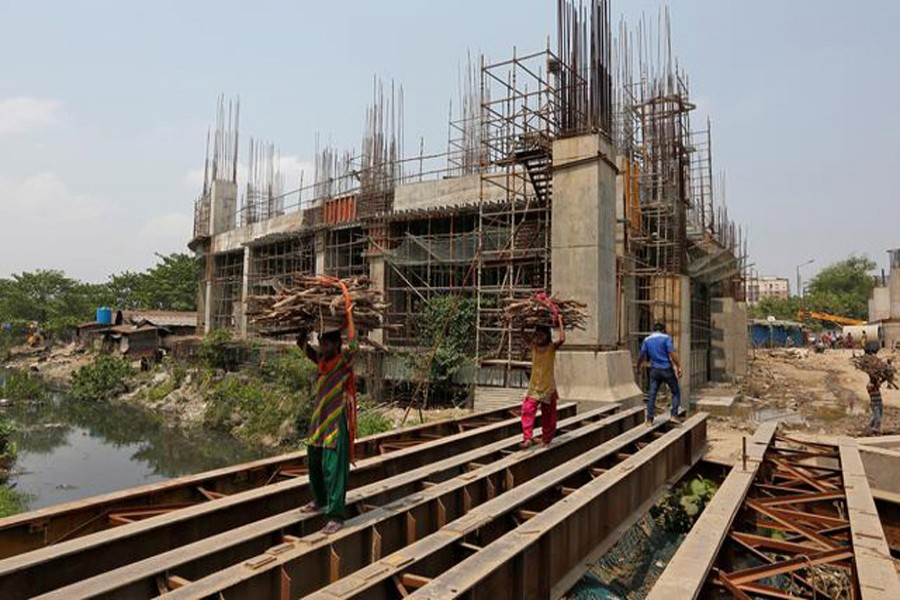India’s economy grew at its weakest pace since 2013 between April and June as consumer demand and government spending slowed amid global trade frictions, raising chances of the central bank cutting interest rates further at its next meeting.
Asia’s third largest economy expanded just 5.0 per cent year on year, official data showed on Friday, far below the 5.7 per cent forecast in a Reuters poll of economists - and analysts believe the slowdown could persist for two or three years while much needed structural reforms are put in place.
In its annual report on Thursday, the Reserve Bank of India (RBI) said a big push on infrastructure spending would be needed to revive consumer demand and private investment.
Structural reforms - covering labour laws, taxation and the legal system - were also required to ease the path for businesses in India, it said.
The RBI has cut its benchmark repo rate by 110 basis points so far this year, and a further cut of at least 25 points at its next monetary policy committee meeting in October now appears on the cards.
India’s economy grew 8.0 per cent in the same quarter of 2018, and 5.8 per cent in the previous quarter.
Madhavi Arora, lead economist at Edelweiss Securities in Mumbai, said the economy appeared to have lost momentum.
“The growth slump clearly reflects that the slowdown is beyond just the cyclical aspects and policymakers need to address the structural constraints to ensure ...growth picks up ahead,” Arora said.
With inflation having run below the RBI’s 4.0 per cent medium-term target in the year to July 2019, it has shown willingness to join hands with the government in trying to provide stimulus.
Krishnamurthy Subramanian, chief economic adviser at the Ministry of Finance, said the government was “taking all the necessary steps” to quickly put the economy back on a high-growth path.
On Friday, the government announced mergers involving ten state-owned banks in a bid to strengthen a banking sector struggling under a mountain of bad debt, and to boost lending.
This week it also approved 100 per cent foreign investment in coal mining and eased rules in the contract manufacturing and single-brand retail sectors.
Broad-based slowdown?
Signs of slowing demand and investment are widespread.
Many indicators – automobile sales, rail freight, petroleum product consumption, domestic air traffic and imports - are signalling drops in domestic consumption.
In July, auto sales tumbled 31 per cent from a year earlier, the biggest decline in nearly two decades, resulting in the loss of hundreds of thousands of jobs.
In the June quarter, private investment grew 3.1 per cent, down from 7.2 per cent in the previous quarter, while government spending growth slowed to 8.8 per cent from 13.1 per cent.
Capital investment picked up to 4.0 per cent from 3.6 per cent, indicating rise in lending by banks, while agriculture grew modestly and manufacturing edged up just 0.6 per cent.
New Delhi recently got help from the central bank, in the form of a windfall dividend of nearly $21 billion that included part of its contingency reserves as well as profits. Finance ministry officials said this provided room for “modest stimulus” despite pressure to contain the fiscal deficit.
Sakshi Gupta, Senior economist at HDFC Bank, said policy stimulus from both the RBI and the government, along with a near-normal monsoon, could provide some economic relief in the second half.
“Going ahead, we are looking at activity improving from these lows. This could be the bottom for the current slowdown,” she said.


